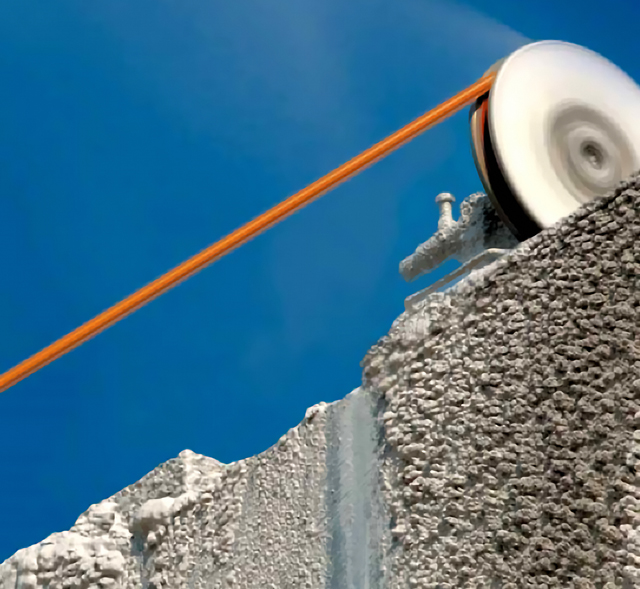NERO IMPALA WITHOUT SECRETS

Following the 1989 social changes in Poland, imported stone celebrated its victory. Black gabbros from the Rustenburg area in South Africa, including the most famous Nero Impala, gained unprecedented popularity. And it was for a good reason. Tombstones were the completely dominant assortment in the field of stoneware production in Poland at that time, and it is difficult not to notice that they look best in black.
It is not without interest that, at one time, the import of this stone in blocks represented almost 80% of all blocks imported into Poland. Nero Impala was originally imported by various distributors and has been available in the M + Q range since 2000.
A lot has changed on the Polish market over the years. Nowadays, tombstones are no longer of fundamental importance for the stone industry in Poland, it is rather the construction industry. As it turned out, black, with its undeniable elegance, is still very popular not only in architecture. For this reason, African gabbros are still one of the most popular stones on our market. It might appear that everyone knows everything about this stone. But are you really sure about that?
Deposit sites
Nero Impala is mined in the Bushveld massif. This massif is more than 2 billion years old and is one of the oldest massifs of this type in the world. It is entirely of volcanic origin and covers a total area of over 65,000 km2. The layers of the massif are oriented at an angle of 6 to 25 degrees with respect to the centre of the intrusion. The geological complex of Rustenburg was created from plutonic rocks and contains four zones, three of which are economically important.
The crucial zone covers almost half of the world’s chromium ore resources and the world’s largest platinum ore deposits. The upper (magnetite) zone is the main source of vanadium. However, for the stonemasonry industry, it is the main zone located between the two above mentioned zones that is most important. It is a place where gabronorites are mined, especially around Rustenburg.
These are coarse-grained plutonic rocks consisting of plagioclases as well as orthopyroxenes and clinopyroxenes. The sites also contain smaller deposits of quartz, magnetite, hornblende apatite and mica.
There are five different subzones in the main zone. It is subzone C that is most important for the stone industry. It is distinguished from the others by a special form of orthopyroxenes. In this subzone orthopyroxenes exist in the form of inverted pigeonite, which makes Nero Impala is a rock of high quality and strength. This mineral also affects the structure and size of the grain. It can be found only in the Rustenburg-Marikana region.
It should be mentioned that there are also gabronorites with economic potential in sub-zone B, but they do not contain this specific kind of orthopyroxenes.
Despite the fact that the mineral composition of gabronorites is constant, the colours vary depending on the place of extraction. Darker varieties occur around Rustenburg, lighter in the Brits area. Differences in colour are caused by the colour of plagioclase feldspars. You may notice that some materials have a grey-blue tint and even brown for Nero Impala. White is also present in materials from neighbouring areas – for example in Nero Africa.
The thickness of the deposits is interesting. More than 60% of large blocks and approximately 25% of medium-sized blocks are obtained in Nero Impala quarries. Unfortunately, nature has its own laws and some defects appear in the mined blocks. Therefore, only between 10-12% of production is sold.

Producers
The history of stone mining in the Rustenburg region is long. The first blocks were mined in the 1940s. In fact, Nell’s Quarry was the first quarry in the true sense of the word. The first name of the mined gabronorite was Parys. Another quarry, Springbok, was brought into operation in 1950. Taylor (1957) and Cannata (1960) were then opened. Many small, often family mines also started mining.

The growing demand for Impala led to the entry of foreign investors and investment in the development of mining technology. The first major investor was Marlin, followed by Kudu and Kelgran.
Finally, Finstone S.a.r.l. registered in Luxembourg, with its slogan “stone funding“ as part of its mission, entered the market. Following the acquisition of controlling interests in Marlin company, the new company also acquired Minaco Granite and Marble, Kudu Granite Holding, Impala Granite and Natura Stone Quarries. Another important change was the establishment of JVK through Finstone and the Italian RED Graniti, which took over a controlling stake in Kelgran (2004). In this way, Finstone S.a.r.l. became a leading producer of gabranorites in the region. One of the companies belonging to this holding is M + Q, founded in 1932 with branches around the world, including Poland.
At present, Marlin quarries produce more than 50,000 m3 of stone. There, the stone is mined using diamond wire cutting technology.
Source: Kurier kamieniarski
Author: Dariusz Wawrzynkiewicz | Published: 15 November 2017
